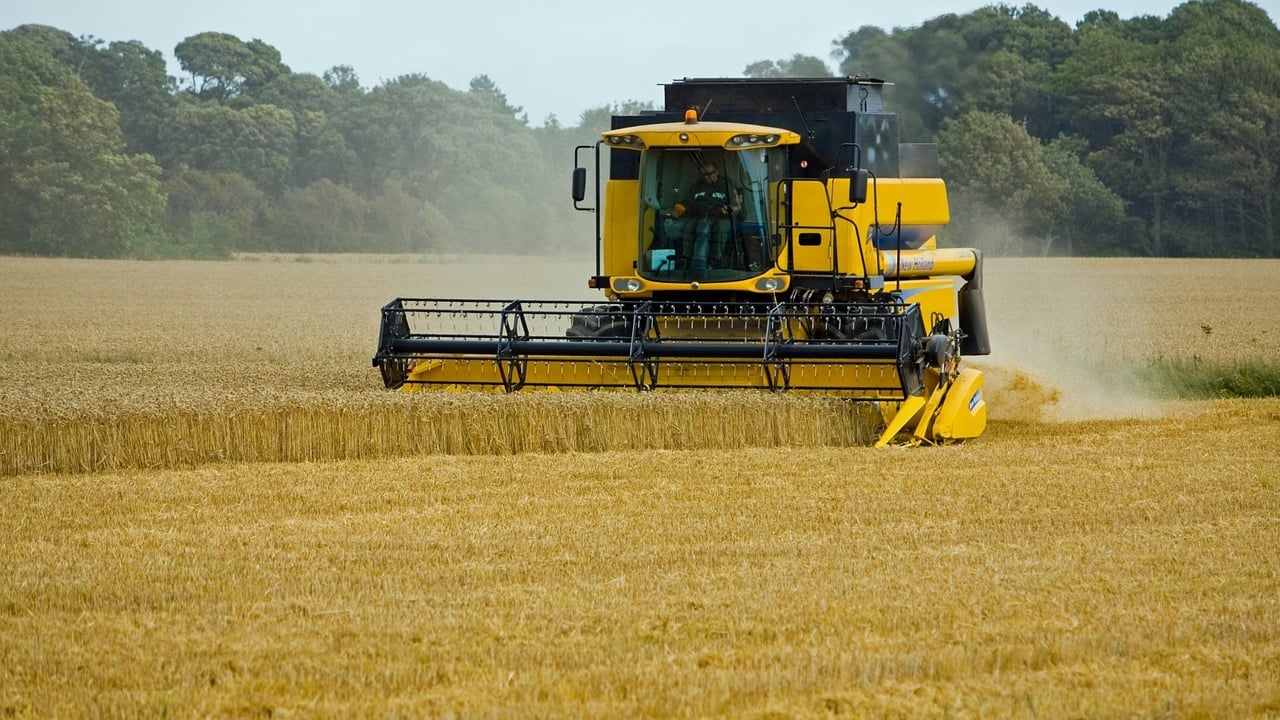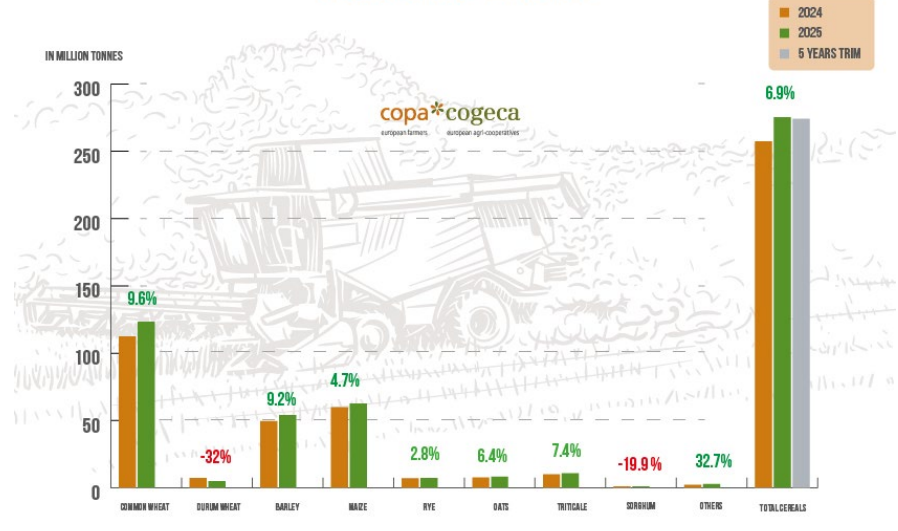Copa Cogeca expects 'modest improvement' in EU cereal harvest
There will be a modest improvement for cereals in the European Union this year, according to the latest forecast from Copa Cogeca.
The report, prepared by experts from the umbrella organisation's working parties for cereals, oilseeds and protein crops, states there will be a mixed but relatively stable year for oilseeds and a positive outcome for protein crops despite a decline in sown area.
However, they warn that the overall situation remains weather-dependent and the coming weeks will be decisive.
Cereal production across the 27 EU member states (EU-27) is forecast to reach 275.2 million tonnes in 2025, representing a 6.9% increase when compared to 2024.
Copa Cogeca states that this recovery is driven by a 2.2% rise in sown area and a 4.6% improvement in yields.
Common wheat production is expected to rise by 9.6% on 2024 levels, barley by 9.2%, and maize by 4.7%, all supported by better yield conditions.
However, durum wheat faces a sharp decline of 32% due to significantly lower yields.
Among other cereals, triticale (+7.4%), oats (+6.4%), and rye (+2.8%) are also expected to record production increases.
In contrast, sorghum faces a significant decline (-19.9%) due to a sharp reduction in sown area (-31.1%).
The report outlines that the recovery is uneven across member states with some regions showing clear signs of improvement, challenges such as summer heatwaves continue to pose concerns in other areas.
While the 2025 cereal harvest is looking like a clear improvement over 2024, it is close to the five-year trimmed average (276.6 million tonnes). This average reflects "a period of below-par harvests", according to the report.
"The past five seasons have consistently fallen short of historical benchmarks, meaning that even this year’s 'recovery' remains well below levels seen in earlier decades.
"In this context, 2025 should be viewed as a relative stabilisation following a period of chronic underperformance," Copa Cogeca said.
For oilseeds, the 2025 outlook is relatively stable, with total EU-27 production expected to reach 31.1 million tonnes, representing a slight decline of 0.8% compared to 2024.
The overall oilseed area is up marginally by 0.5%, while yields are forecast to remain fairly steady, declining by 1.3%.
A small increase in rapeseed production (+0.1%) is offset by a decrease in sunflower production (-4.5%), mainly due to lower yields.
In contrast, soya production is projected to grow by 5.9%, driven by both expanded area and improved yields.
Some regions are benefitting from favourable early spring conditions, while others continue to face persistent soil moisture deficits and volatility in input markets.
Protein crops offer the most positive results in this year’s outlook. Despite a 3% decrease in total area, EU-27 production is expected to reach 3.82 million tonnes, an increase of 8% on 2024.
This growth is largely due to better yields, especially for peas (21%) and beans (11%). Lupin production, however, has declined sharply (-66%) due to both lower area and yields.
"While early indications are broadly encouraging, continued heat events or rainfall deficits during grain filling and harvesting could impact final results.
"Close monitoring of crop conditions across member states is essential, as the coming weeks will be critical to determining the final outcome of the 2025 harvest," Copa Cogeca said.






